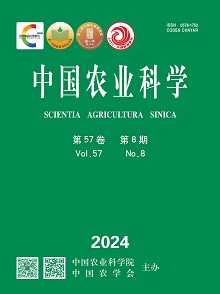【Objective】 Weeds are one of the factors limiting cotton growth in cotton production, which not only competes with cotton for nutrition, water, and light, affecting the growth and development of cotton but also the yield and quality of cotton. The aim of this study is to develop excellent cotton germplasms with high glyphosate tolerance by genetic engineering and provide technical support for the commercialization of glyphosate-tolerant cotton to realize chemical weed control and enhance the economic benefits of cotton production. 【Method】 To construct the cotton transformation vector, the EPSPS gene 1174AALdico-2 from Deinococcus radiodurans was connected to the chloroplast transit peptide (CTP), 35S was used as the promoter, and the two target genes were linked in series. The target gene was transformed into the CCRI 49 by Agrobacterium tumefaciens in vivo transformation, and the positive transformants were obtained. The positive transgenic plants obtained were evaluated for glyphosate tolerance, molecular characterization, agronomic and economic traits, in order to obtain outstanding transgenic cotton germplasms with excellent glyphosate tolerance, using the recipient cultivar, CCRI 49, and the non-transgenic NON isolated from the transformants during selfing as the controls. 【Result】 138 positive transformants were obtained by Agrobacterium tumefaciens in vivo transformation. All the transformants were tested for target gene PCR, Southern blot, Western blot, and ELISA detection etc., and 17 positive transformants with clear molecular characteristics and high expression of foreign genes were identified. Southern blot and nucleotide sequencing results revealed that there was great variation in insertion site and copy numbers among the 17 transformants. Among them, ZD131, ZD185, and ZD207 had single-copy insertion sites, and the foreign genes were located on D7, D13, and A12, respectively. The results of glyphosate tolerance identification revealed that the glyphosate tolerance of the three transformants, ZD131, ZD185, and ZD207, was stably inherited across three generations, and the glyphosate tolerance of the transformants was strong, with the ability to tolerate four times the recommended dose of glyphosate in the field. The agronomic and economic features assessment findings revealed that the ZD131, ZD185, and ZD207 grew properly and had excellent agronomic traits such as large boll, high lint percentage, and high boll setting, as well as their lint yield was higher than that of the receptor cultivar control and their fiber quality reached to the high-quality cotton level. 【Conclusion】 The EPSPS gene 1174AALdico-2 from Deinococcus radiodurans connected with the chloroplast transit peptide, and the two gene tandem together was transferred into CCRI 49 by Agrobacterium tumefaciens in vivo transformation technology. After a series of screens, three outstanding transgenic glyphosate-tolerant germplasms, ZD131, ZD185, and ZD207, were obtained. This method not only improves cotton's glyphosate tolerance but also improves the agronomic and economic aspects of transgenic materials.











